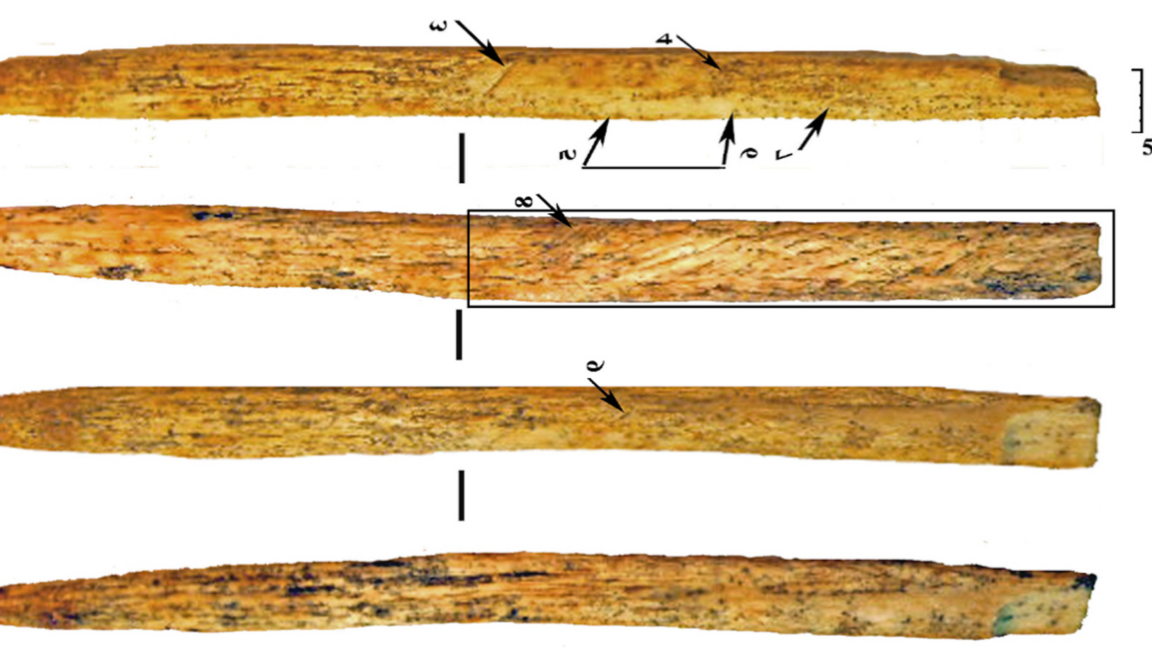INSUBCONTINENT EXCLUSIVE:
Working bone into a streamlined, aerodynamic spear point, then hafting it onto a shaft with tar that had to be extracted and refined before
use takes some sophisticated knowledge and skill
prehistoric ITAR violation
risk
In these magnified photos, you can see the impact damage to the point's tip.
Credit:
2025
A small crack at the tip of the spear point shows that some Neanderthal hunter used it at least once and managed to
Golovanova and colleagues examined the crack and the finer network of cracks (visible in micro-CT images) that spread back and out from the
Those cracks closely resembled damage from a head-on impact, which archaeologists have seen in bone tools from other sites and in
an excellent approach to science).And apparently a bone spear point was worth trying to fix up and reuse, because traces of grinding show
that someone tried to smooth out the crack, probably with a stone tool.What kinds of prey were the Neanderthals of Mezmaiskaya Cave hunting?
Based on the bones found in the cave, many of which show marks from cutting and scraping, the local menu included some birds and small
mammals, but also bigger game like bison, deer, relatives of modern horses, and wild sheep and goats.The point is, interspecies interactions
are complicatedArchaeologists have found plenty of evidence that Neanderthals used bone tools for all sorts of things, from shaping and
retouching stone to softening animal hides
The projectile point, though, is the first evidence that Neanderthals knew how to carefully work bone into a particular shape, instead of
just picking up a conveniently shaped rib to smooth out some hides.Using specific processes to sculpt bone, combined with using ocher to
street that anthropologists once expected.Journal of Archaeological Science, 2023 DOI: 10.1016/j.jas.2025.106223; (About DOIs)

